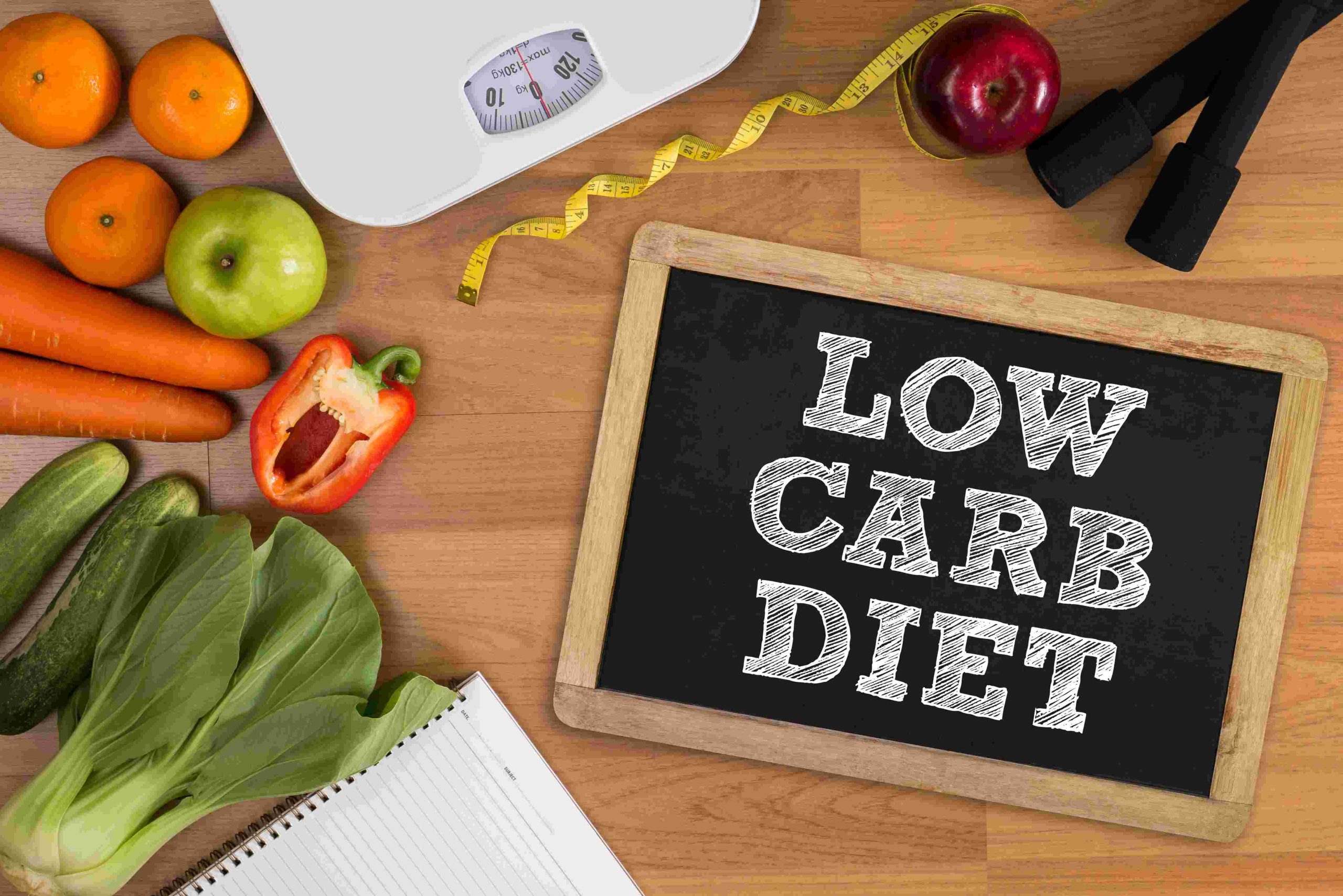If you’re looking to lose weight, improve your health, and get in shape, you’ve probably heard of the low-carb diet. This diet has become increasingly popular over the years, and with good reason. It’s an effective way to lose weight and live a healthier lifestyle.
But, before you jump on the low-carb bandwagon, it’s important to understand what a low-carb diet is and how to create a plan that’s tailored to your needs. In this ultimate guide, we’ll cover everything you need to know about low-carb dieting and how to create a personalized plan that works for you.
What is a Low Carb Diet?
A low-carb diet is a diet that restricts the consumption of carbohydrates, usually to less than 20-50 grams per day. Instead, you focus on eating more protein, healthy fats, and vegetables.
This type of diet is often referred to as a more casual form of “ketogenic” diet because it forces the body to enter into a state of ketosis. In this state, the body is forced to use stored fat for energy instead of carbohydrates.
The “low-carb” part of the diet is relative. For some, it may mean eating no more than 50 grams of carbs per day, while for others it may mean eating fewer than 100-150 grams of carbs per day.
Benefits of a Low Carb Diet
The low-carb diet offers a variety of health benefits, including:
- Weight loss: A low-carb diet can help you lose weight quickly and effectively because it forces the body to use stored fat for energy.
- Improved metabolic health: Low-carb diets can help improve your metabolic health by reducing insulin levels and increasing fatty acid oxidation.
- Reduced inflammation: Eating fewer carbohydrates can reduce inflammation in the body, which can help improve overall health.
- Reduced blood sugar levels: Low-carb diets can help reduce blood sugar levels, which can help reduce the risk of type 2 diabetes.
- Improved cardiovascular health: Low-carb diets can help improve your cholesterol levels, which can help reduce the risk of heart disease.
Health Considerations When Following a Low Carb Diet
Although the low-carb diet offers numerous health benefits, there are some health considerations to keep in mind before embarking on this eating plan.
Firstly, it’s crucial to ensure that your diet contains adequate nutrients. Since low-carb diets tend to be high in animal protein and fat, it’s important to include plenty of plant-based foods like fruits, vegetables, nuts, and seeds to maintain a balanced diet.
Secondly, it’s essential to note that low-carb diets may not be suitable for everyone. Those with certain medical conditions, such as diabetes, may require modifications to their diet. Pregnant women and individuals with kidney or liver disease should avoid low-carb diets altogether.
Lastly, staying hydrated is vital. Low-carb diets can lead to dehydration, so it’s recommended to drink at least eight glasses of water daily.
Guidelines for Creating a Low Carb Diet Plan
Here are some simple guidelines to help you get started in creating a low-carb diet plan without making it complicated:
- Focus on whole foods: Choose whole, unprocessed foods like fruits, vegetables, nuts, seeds, and lean proteins.
- Limit added sugars: Avoid processed foods and drinks that contain added sugars.
- Eat more healthy fats: Include healthy fats like olive oil, nuts, and avocados in your diet.
- Avoid refined carbs: Refined carbohydrates like white bread, pasta, and rice should be avoided.
- Eat more fiber: Foods like legumes, vegetables, and whole grains are high in fiber and can help keep you feeling full.
- Meal plan ahead: Meal planning can help you stay on track and make sure you’re getting the nutrients you need.
- Track your progress: It’s important to track your progress to make sure you’re on track and make adjustments as needed.
Learn more Low carb high fat diet
Low Carb Diet for Diabetics
If you have diabetes, taking extra care is crucial when adopting a low-carb diet. It’s recommended to collaborate with your physician or a dietitian to ensure that your diet provides essential nutrients while effectively regulating your blood sugar levels.
Here are some helpful tips for individuals with diabetes who are following a low-carb diet:
- Get regular blood sugar checks: A low-carb diet can have an impact on your blood sugar levels, so it’s important to get regular blood sugar checks to make sure you’re on track.
- Monitor your ketone levels: A ketogenic diet can put your body into a state of ketosis, which can be dangerous for diabetics. Monitor your ketone levels to make sure they stay in the safe range.
- Increase fiber intake: Fiber can help slow down the absorption of sugar in the body and can help keep blood sugar levels stable.
- Avoid processed foods: Processed foods are often high in sugar and can cause blood sugar spikes.
- No Cheat day
Low Carb Diet Recipes
Once you have the basics of a low-carb diet down, it’s time to start planning your meals. Here are some delicious low-carb recipes to get you started:
- Omelette Breakfast : Start your day with this delicious Omelletes, bell peppers, onions, and cheese.
- Superfood salmon salad bow: This easy, one-pan meal is full of healthy fats and protein and perfect for a quick and easy dinner.
- Keto Thai style meat mince konjac : This Yummy dish is low in carbs and high in flavor.
- Keto Spring Roll Wrapper (popiah): Spice up your lunch with these flavorful keto wraps filled with egg, cheese, and vegetable .
- Okara salad : Enjoy a light and healthy lunch with this easy salad.
- Chicken meat ball : Satisfy your meat cravings with this dish.
Low Carb Diet Snacks
Snacking is an important part of any diet, and low-carb diets are no exception. Here are some tasty low-carb snacks that will help keep you on track:
- Nuts and seeds: Nuts and seeds are a great source of healthy fats and protein.
- Cheese and olives: Enjoy a snack of cheese and olives for a perfect combination of protein and healthy fats.
- Hard-boiled eggs: Hard-boiled eggs are an easy and delicious snack that’s high in protein and low in carbs.
- Veggies and dip: Enjoy an afternoon snack of crunchy veggies with a low-carb dip.
- Jerky: Jerky is a great source of protein and low in carbs.
Shopping List for a Low Carb Diet
Creating a grocery list is an important part of any diet plan. Here’s a helpful shopping list to get you started on a low-carb diet:
- Fruits: Berries, avocado, guava
- Vegetables: Leafy greens, peppers, tomatoes, mushrooms
- Nuts and seeds: Almonds, walnuts, cashews, pumpkin seeds, sunflower seeds
- Protein: Lean meats, eggs, fish, seafood, poultry
- Healthy fats: Avocados, olive oil, coconut oil, nut butters
- Dairy: Greek yogurt, cheese, cottage cheese, milk
- Legumes: Lentils, beans, peas
- Beverages: Water, unsweetened almond milk, unsweetened green tea
Tracking Progress With a Low Carb Diet
Once you’ve created your low-carb diet plan, it’s important to track your progress. Keeping track of your meals, snacks, and exercise will help you stay on track and ensure that you’re meeting your goals.
Here are some ways to track your progress:
- Food diary: Keeping a food diary can help you stay on track and ensure that you’re eating the right foods.
- Exercise log: Tracking your exercise can help you stay motivated and ensure that you’re getting enough physical activity.
- Weight tracking: Tracking your weight can help you monitor your progress and make adjustments as needed.
- Measurements: Taking measurements of your waist, hips, and other areas can help you track your progress.
- Photos: Taking progress photos can help you see the changes over time.
Conclusion
The low-carb diet can be an effective way to lose weight and enhance your overall well-being. By following the recommendations provided in this guide, you can create a personalized low-carb eating plan that suits your preferences and goals.
Remember to prioritize whole, unprocessed foods, limit added sugars, increase your intake of healthy fats, and steer clear of refined carbs. Diabetics should get regular blood sugar checks and track their progress to ensure that they are on the right path.
With a well-crafted plan and consistent effort, you can safely and effectively adopt a low-carb diet and enjoy its numerous health benefits.
![]()




